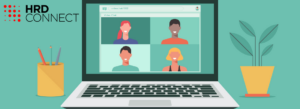The 2020 organizational agenda: what is health and wellbeing?
- 6 Min Read
Health and wellbeing is a key topic for HR leaders during these challenging times. HRD Thought Leader Debra Corey delves into how the University of Lincoln has embraced agility and innovation to create a successful health and wellbeing agenda.
- Author: Debra Corey
- Date published: Sep 9, 2020
- Categories

Now more than ever, HR leaders are asking: ‘what is health and wellbeing, and how can it benefit my business and its employees?’.
In fact, according to a 2020 COVID-19 UK benefits survey from Willis Towers Watson, 3/5 of employers are looking to enhance their wellbeing programs. While this is a positive development, it puts many companies in a situation where they may be unsure as to where to start and what to do.
To help with this challenge, I interviewed Ian Hodson, Head of Reward & Deputy Director of HR, University of Lincoln. Hodson has been doing a great deal of work to drive wellbeing at the University, including a company-wide wellbeing review in recent months. Over the course of the discussion he explained what health and wellbeing actually is, some of the new programs that were put in place, and the positive impact this has had so far.
Why and how did you decide to conduct your wellbeing review?
Our main reason for conducting a wellbeing review was to compliment the university’s project of becoming a more agile organization. From a wellbeing perspective, this means providing an offering that is flexible enough to meet the needs of our evolving and agile workforce in our six focus areas: physical, mental, financial, environmental, community and engagement.
Our approach was to mirror the university’s culture of using technology to look at processes differently and to not be afraid to experiment with new ideas. To this end, we formed an internal working group in HR and worked with our engagement champions across the university to ensure that the development phase incorporated what individuals wanted, and encompassed the brainstorming ideas of colleagues.
We considered all colleague input and ran specific focus groups on aspects of wellbeing. These included commuting to the workplace, and used our professional networks to learn from approaches of other sectors to supporting remote agile workers.
What new wellbeing programmes did you put in place and why?
We looked to make our wellbeing offering more diverse and more colleague-led, as well as more accessible to those both on and off campus. As part of this, we developed lots of new online classes (such as yoga and mindfulness), social wellbeing activities (such as book and film clubs), and also looked to promote new financial vehicles such as workplace ISAs and regular payroll saving as part of supporting financial wellbeing.
Can you tell us more about the virtual running and walking clubs you put in place during COVID-19?
We put in place these virtual clubs to give employees the opportunity to still engage with social physical exercise even when we weren’t in the workplace. The way they work is that everyone logs on to a Teams call, with the leader going through a warm-up, and then sending the group off for a 30-minute run or walk at a pace they are comfortable with.
Throughout the session, the group chats to each other, turning it into a social event. Some groups have even started compiling communal song playlists which has created a real sense of community. The added benefit is that it’s helped those who felt vulnerable running or walking on their own or struggle to motivate themselves to get in an exercise routine.
One of the outcomes of your review was to deliver your wellbeing offering in a virtual way. Can you explain how you did this?
A key part of the project was to challenge ourselves as to how we could deliver wellbeing in a virtual and flexible way to our workforce of 2,500 employees. We quickly identified that we did not want to confuse the offering with other programmes, and that we needed a vehicle for specifically hosting the information. This became the HomeHub, our agile worker wellbeing micro-site.
We used our research to inform us that the site needed to create the impact of speaking to colleagues, and having a magazine-like feel. It includes featured articles on the specific six wellbeing themes to educate, colleague stories to inspire, self-assessment tools to evaluate and focus wellbeing objectives, and signpost to internal and external support.
Often the most challenging part of a new offering is the launch, how did you launch you go about this?
We felt it was really important that there was an impact when the micro-site went live. So, to support this, we devised a communication plan that ran on a countdown basis, using all of our channels to promote a ‘coming soon’ launch.
Through our communications newsletter, we kept up an ongoing dialogue with our colleagues and drip-fed some of the upcoming events, such as financial wellbeing webinars, virtual physio sessions with our sports science department, and our virtual running club. We also introduced monitoring of the hubs so we could see how many impressions we were getting on the sites, and thus what was working and what needed to be changed.
Being a university, you are in a unique situation in that you can not only influence the wellbeing of your staff, but of students who work for you. Can you tell us more about this?
As an organisation, we roll many of our programs out to our student worker population, which, when it comes to wellbeing, means we can educate the workforce of tomorrow on all aspects of their wellbeing prior to them entering the workplace. This is a huge, but important responsibility, as it is part of their life skills development alongside their academic development, and will embed eating, exercise, civility and collegiate values that will remain with them throughout their careers.
Finally, what has been the overall impact of your new wellbeing initiatives?
The biggest impact has been that it’s helped to make our entire workforce feel that we’re committed and that we support their wellbeing, Connecting and engaging with them through our new initiatives and our wellbeing hub has been vital in this regard.
As far as number, our first set of financial education workshops were fully booked, the virtual running club has a subscription list of 109 colleagues, and the HomeHub site already has over 330 hits per week. We’ve also been able to increase engagement with other associated benefits, like an increased usage of the EAP, recommendation clubs for books and films, e-cards, virtual staff development programs, and crucially, the staff suggestion scheme which always shows how engaged our colleagues are to improving operations.









